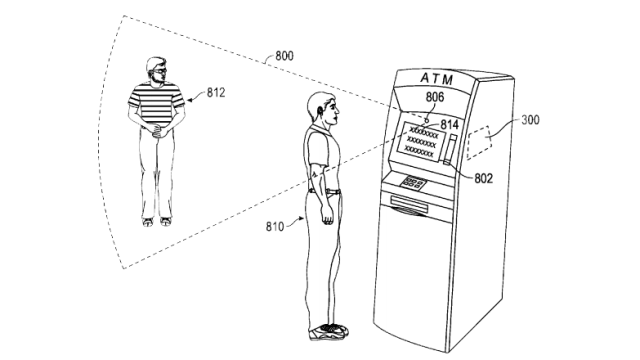Google’s big Glass free-for-all has come and gone, but whether or not anyone actually bought the damn thing, cameras are popping up all over the place, and people are starting to get (perhaps rightfully) paranoid. Fortunately, there could be tech in the future to save your screens from prying camera eyes. And Bill Gates has the patent.
The patent, which lists Gates as one of the inventors, describes itself as “a system for detecting and responding to an intruding camera”. Essentially, the technology (which could work on any device that has a screen and a camera) would scan the area around it for any intruding cameras and, upon seeing one, respond in one of several ways: alerting the user, editing the screen, or even blurring the screen altogether.

As the patent pitches it, this anti-camera protection actually seems pretty discerning. It even knows when a camera has its lens cap on. From the patent application:
Intruder analysis module scans the input for viewers, and classifies them as either intruders or safe viewers. Intruder analysis module also scans the input for cameras or camera-equipped devices (e.g., SLR cameras, camera-equipped cellular phones, point-and-shoot cameras, building-mounted camera systems, etc.). Intruder analysis module may classify an object as a viewer or camera using any number of detection algorithms. For example, intruder analysis module may apply motion detection algorithms on the sensor information, and may classify any moving object as a viewer. As another example, intruder analysis module may apply shape detection algorithms that scans the sensor information for lens (e.g., circular) shapes. As another example, intruder analysis module may apply shape detection algorithms that scans the sensor information to determine whether a detected camera has a lens cap emplaced; in this case it may not be considered as an intruder. As another example, intruder analysis module may apply shape detection algorithms that scans the sensor information to determine the orientation of a detected camera….
The processing circuit (via the intruder analysis module) analyses the information to determine the presence of intruding camera. The processing circuit (via the edit generation module) edits or changes content on electronic media display device in response to detecting intruding camera. For example, the processing circuit may blur the contents of the display or cause an alert to appear, thereby notifying user of the intrusion. In this manner, sensitive content can be protected from being captured by unauthorised cameras. It should be understood that the application is not limited to detecting cameras attached to buildings, and that other scenarios are envisioned. For example, electronic media display device 1300 may detect another cellular phone equipped with a camera. Similar embodiments are also useful in public locations or while a user is taking public transportation, where intruding cameras are likely to be present.
Of course, as with any patent, there is a very real possibility that we may never see anything that uses this sort of tech on shelves. But as people’s concerns about Glass and other wearable, camera-equipped tech continue to grow, you can bet that we’ll be seeing a lot more attempts at camera-blockers in the years to come. [GeekWire via Slashdot]
